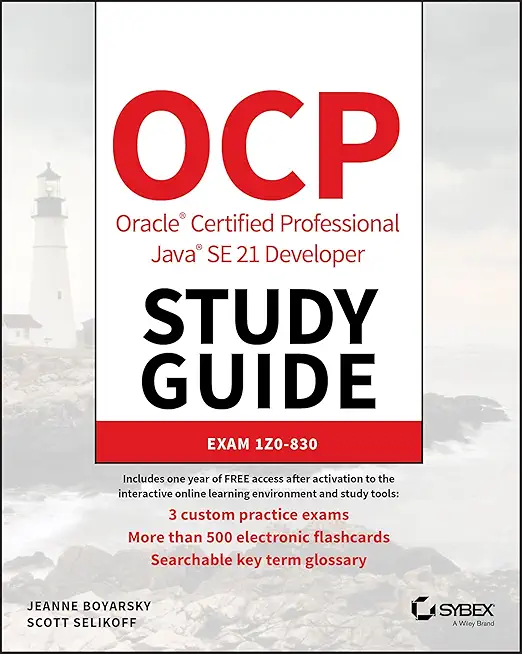Developing SOAP Web Services in Java Training in Miami
Enroll in or hire us to teach our Developing SOAP Web Services in Java class in Miami, Florida by calling us @303.377.6176. Like all HSG
classes, Developing SOAP Web Services in Java may be offered either onsite or via instructor led virtual training. Consider looking at our public training schedule to see if it
is scheduled: Public Training Classes
Provided there are enough attendees, Developing SOAP Web Services in Java may be taught at one of our local training facilities.
|
We offer private customized training for groups of 3 or more attendees.
|
||
Course Description |
||
| A comprehensive look at the state of the art in developing interoperable
web services on the Java EE 6 platform. Students learn the key standards
-- SOAP, WSDL, and the WS-I Basic Profile -- and the Java architecture
that has evolved to build interoperable services and clients. We begin
with an introductory module that covers both SOAP-based and RESTful
services, and therefore both JAX-WS and JAX-RS. br/ But JAX-WS is
central to the course, and we cover both WSDL-driven and Java-driven
development paths, as well as message handlers and attachment support.
With the new Provider and Dispatch APIs, it's now much easier to
integrate SAAJ, JAXB, and JAXP code into services and clients, and we
explore these strategies in depth as well.
Course Length: 5 Days
Course Tuition: $2250 (US) |
||
Prerequisites |
|
| Strong Java programming skills are essential. Students must be able to read XML documents and to write well-formed XML by hand. Experience with other Java EE standards, especially servlets and JSP, will be very helpful in class, but is not strictly required. | |
Course Outline |
Chapter 1. Overview of Web Services
Chapter 2. Web Services for Java EE
Chapter 3. The Java API for XML Binding
Chapter 4. The Simple Object Access Protocol
Chapter 5. Web Services Description Language
Chapter 6. The Java API for XML-Based Web Services
Chapter 7. WSDL-to-Java Development
Chapter 8. Client-Side Development
Chapter 9. Java-to-WSDL Development
Chapter 10. Exception Handling
Chapter 11. JAX-WS Best Practices
Chapter 12. Metadata
Chapter 13. Provider and Dispatch APIs
Chapter 14. The SOAP with Attachments API for Java
Chapter 15. Message Handlers
Chapter 16. Handling Binary Content
Appendix A. Course Tools and UtilitiesAppendix B. Handy Guide to Web-Services Acronyms |
Course Directory [training on all levels]
Technical Training Courses
Software engineer/architect, System Admin ... Welcome!
- .NET Classes
- Agile/Scrum Classes
- AI Classes
- Ajax Classes
- Android and iPhone Programming Classes
- Azure Classes
- Blaze Advisor Classes
- C Programming Classes
- C# Programming Classes
- C++ Programming Classes
- Cisco Classes
- Cloud Classes
- CompTIA Classes
- Crystal Reports Classes
- Data Classes
- Design Patterns Classes
- DevOps Classes
- Foundations of Web Design & Web Authoring Classes
- Git, Jira, Wicket, Gradle, Tableau Classes
- IBM Classes
- Java Programming Classes
- JBoss Administration Classes
- JUnit, TDD, CPTC, Web Penetration Classes
- Linux Unix Classes
- Machine Learning Classes
- Microsoft Classes
- Microsoft Development Classes
- Microsoft SQL Server Classes
- Microsoft Team Foundation Server Classes
- Microsoft Windows Server Classes
- Oracle, MySQL, Cassandra, Hadoop Database Classes
- Perl Programming Classes
- Python Programming Classes
- Ruby Programming Classes
- SAS Classes
- Security Classes
- SharePoint Classes
- SOA Classes
- Tcl, Awk, Bash, Shell Classes
- UML Classes
- VMWare Classes
- Web Development Classes
- Web Services Classes
- Weblogic Administration Classes
- XML Classes
Business Training Courses
Project Managers, Business Analysts, Paralegals ... Welcome!
Upcoming Classes
Gain insight and ideas from students with different perspectives and experiences.
- VMware vSphere 8.0 Skill Up
27 October, 2025 - 31 October, 2025 - Introduction to Spring 6, Spring Boot 3, and Spring REST
15 December, 2025 - 19 December, 2025 - Python for Scientists
8 December, 2025 - 12 December, 2025 - Fast Track to Java 17 and OO Development
8 December, 2025 - 12 December, 2025 - ASP.NET Core MVC (VS2022)
24 November, 2025 - 25 November, 2025 - See our complete public course listing






